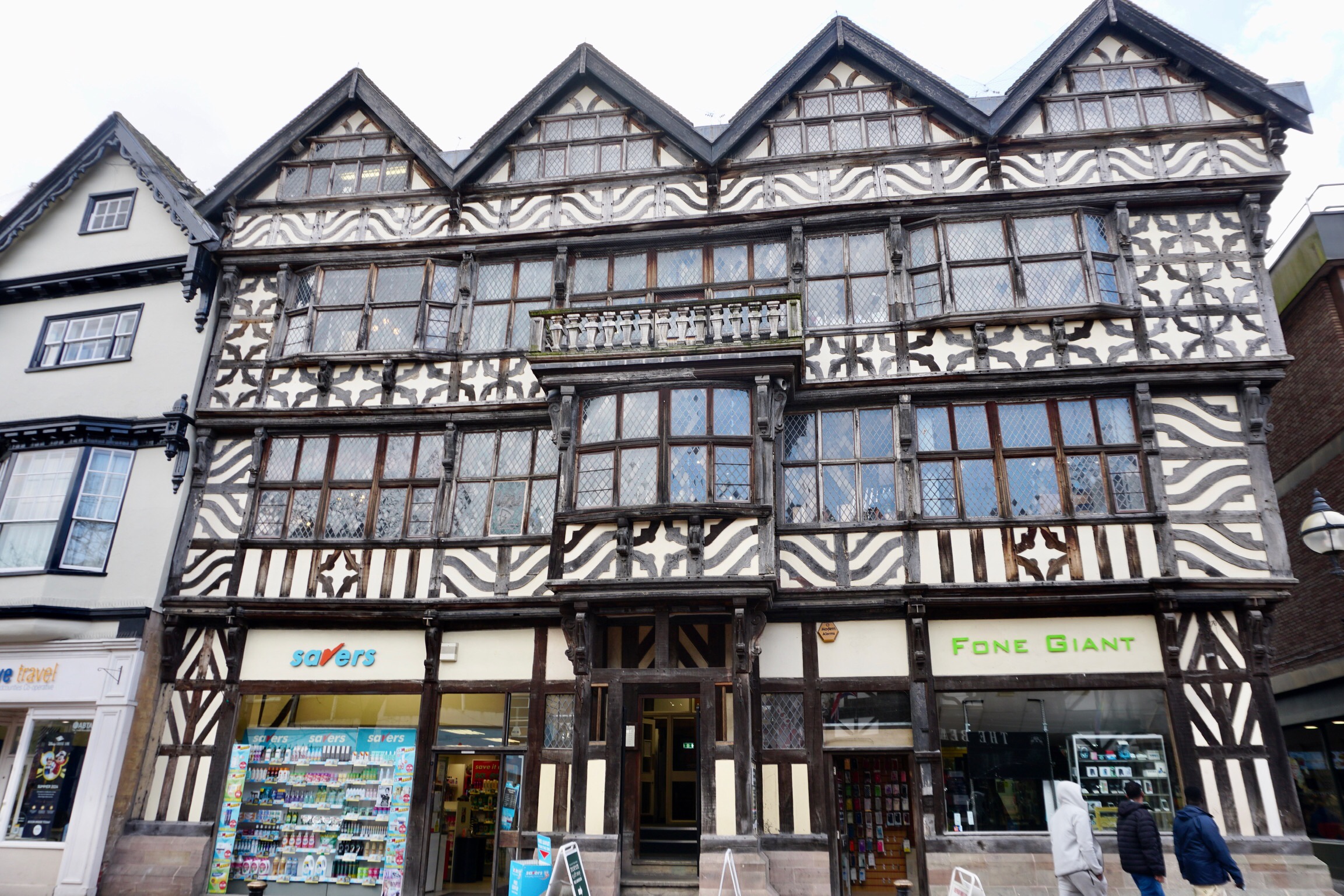
Written April 26, 2023, on the Stafford and Worcestershire Canal near Stafford, England.
For the last two days we have enjoyed the favor of (mostly) dry weather. The sun occasionally peeks through the clouds, and when it does it brings immediate warmth to those navigating the canal. The clear weather has brought colder temperatures. Nighttime temps have dipped below freezing. Last week we were in an industrial and semi-urban area with occasional glimpses of farm and field. This week the vistas have reversed. Towns are now separated by expanses of green pastures populated with grazing livestock.

The views that we enjoy are often surreal. There are occasional glimpses of magnificent manor houses that predate the canal by decades, if not centuries.

Yesterday, we opted for a relatively short cruising day so that we could walk for 45 minutes each way into the old market town of Stafford. It was a jarring experience as the quiet of the canal was immediately replaced by the thunder of speeding vehicles on the busy raodway we trekked beside.

The hike was worth it.


Stafford is an ancient market town that is believed to date to the 8th century CE. It is clear that Stafford has seen better days, but seems to now be discovering its potential as a tourist destination.

In addition to an excellent pub lunch we took in two marvelous sites, the Ancient High House and The Collegiate Church of St. Mary.
The Ancient High House dates to 1595 and is the largest timber framed building in England.


Over the centuries it has seen a number of different uses. It underwent renovation in the 1980s, returning it (as much as possible) to its original configuration.Today it is a museum with a number of rooms recreating scenes that would have been familiar during various eras of the building’s history.




The Collegiate Church of Saint Mary dates to the 1100s.

A “collegiate church” is secondary in importance only to a Cathedral. The building was originally separated into two parts, the current nave was a parish church while the other end, separated by a wall, was reserved to the college.




At the time of Henry VIII’s dissolution of the monasteries (around 1540) the collegiate portion was abandoned to the elements. The parish church remained in service to the needs of the community. Fortunately, the “bones” of the Collegiate Church were sound enough for later restoration. There is no longer a physical divider between the two portions of the church.
We continue today on our slow journey along the 110 mile-long Four Counties Canal Ring. At times physically challenging, our speed across country is usually that of a brisk walk. We find that people are friendlier, and tourists are fewer (or entirely absent) than in the typical visitor meccas. On the canals one cannot help but “smell the roses“ and contemplate the good fortune of being in “real England“.
Peace Everyone. Pete
nancy wallingford says:
Pete and Christine, thank you so much for sharing your travels with us. I feel almost like I am there !! Nancy Wallingford
Pete Schloss says:
My pleasure Nancy!
Laura Gust says:
The Ancient High House reminds me of a Chinese custom of building a house on top of the old one for married children, etc. Good to hear you get sun, not so much the cold. stay well.
Pete Schloss says:
Thanks Laura!
Liz Stevens says:
Well hey there dear friends (and friends I haven’t met). Mostly dry – hmmm.. makes for green pastures but chilled fingers holding the tiller I imagine. Love the pictures… beautiful countryside and quaint villages. I LOVE the hassocks – I have always groaned (probably out loud) when I have had to kneel for any length of time on those wooden planks. The cushions look like a fabulous addition. Thanks for the history lesson – always love the background on the pictures you post! Hoping for sunny days and temperate night! Float on!!
Pete Schloss says:
Thanks Liz!!